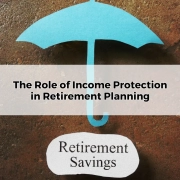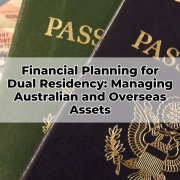How to Make Catch-Up Superannuation Contributions
Table of Contents
ToggleSuperannuation is the bedrock of retirement planning in Australia, providing a tax-effective means to accumulate savings for your later years. However, life’s unpredictable nature can sometimes lead to gaps in contributions. Whether due to career breaks, part-time work, or other financial priorities, these gaps can leave your superannuation balance lower than desired. Fortunately, the Australian government has introduced a strategy known as catch-up contributions, allowing eligible individuals to boost their superannuation savings. This blog post will explore how to make catch-up superannuation contributions and why this strategy is crucial for enhancing your retirement nest egg.
What Are Catch-Up Superannuation Contributions?
Catch-up superannuation contributions refer to the ability to make additional contributions to your super fund using unused concessional contribution caps from previous financial years. This strategy is made possible through the carry-forward rule, which allows individuals to roll over their unused concessional cap amounts for up to five years. The primary purpose of catch-up contributions is to enable those who have had interrupted work patterns or lower income periods to boost their superannuation balance, helping them to catch up on their retirement savings.
Eligibility for Making Catch-Up Contributions
Not everyone is eligible to make catch-up contributions. To qualify, you must have a total superannuation balance of less than $500,000 at the end of the previous financial year. Additionally, you must be eligible to make concessional contributions, which means being under the age of 75 and meeting the work test if you are aged 67 to 74. Understanding these eligibility requirements is crucial to determine whether you can take advantage of the carry-forward rule and make catch-up contributions to your superannuation.
How the Carry-Forward Rule Works
The carry-forward rule allows you to access unused portions of your concessional contribution cap from the previous five financial years, provided your total superannuation balance is under the $500,000 threshold. For example, if you did not use your entire concessional cap in one or more of the past five years, you can carry forward the unused amount and contribute it in a future year, effectively increasing your cap for that year. This flexibility can be particularly beneficial if you have fluctuating income or if you receive a windfall that you wish to contribute to your superannuation.
Benefits of Making Catch-Up Contributions
The primary benefit of making catch-up contributions is the potential to significantly enhance your retirement savings. By contributing more to your superannuation, you can take advantage of compound interest over time, which can greatly increase your super balance by the time you retire. Additionally, catch-up contributions can offer immediate tax benefits, as concessional contributions are typically taxed at a lower rate within your super fund than your marginal income tax rate. This can reduce your overall tax liability while boosting your retirement savings.
Maximising Your Concessional Contributions
To make the most of catch-up contributions, it’s important to understand the concessional contribution caps. The standard cap is $30,000 per financial year, but with the carry-forward rule, you can potentially contribute more if you have unused caps from previous years. Maximising your concessional contributions can be an effective strategy to reduce your taxable income and increase your superannuation savings, particularly in years when your income is higher or when you have additional funds available to contribute.
Tax Implications of Catch-Up Contributions
Catch-up contributions, like all concessional contributions, are taxed at 15% within your superannuation fund, which is often lower than your marginal tax rate. This lower tax rate can provide significant tax savings, particularly if you are in a higher income bracket. However, it’s important to be aware that if your combined income and concessional contributions exceed $250,000, an additional 15% tax may apply to the excess amount, known as Division 293 tax. Understanding the tax implications of catch-up contributions is essential for effective financial planning.
Integrating Catch-Up Contributions with Financial Planning
Catch-up contributions should be viewed as part of a broader financial strategy that aligns with your retirement goals. By integrating catch-up contributions into your overall financial plan, you can balance the immediate tax benefits with the long-term growth of your superannuation. This strategy is particularly useful for those approaching retirement who need to boost their superannuation balance quickly. A well-thought-out plan, possibly developed with the help of a financial adviser, can ensure that catch-up contributions are used effectively to enhance your retirement savings.
How to Make Catch-Up Contributions
Making catch-up contributions involves a few straightforward steps. First, check your eligibility and calculate any unused concessional contributions from the past five years. Next, decide how much you want to contribute, keeping in mind the contribution caps and your overall financial situation. Then, make the contribution to your super fund, ensuring it is designated as a concessional contribution. It’s important to complete this process within the relevant financial year and to notify your super fund if you are taking advantage of the carry-forward rule.
Common Mistakes to Avoid
When making catch-up contributions, there are several common mistakes to avoid. One is misunderstanding the eligibility criteria, such as the $500,000 total superannuation balance limit, which could disqualify you from making catch-up contributions. Another is overlooking the impact on your contribution caps, which could lead to exceeding the caps and incurring additional tax penalties. It’s also important to ensure that contributions are made within the appropriate timelines to avoid missing out on the benefits of the carry-forward rule.
The Role of a Toowoomba Financial Adviser in Superannuation Planning
Working with a Toowoomba Financial Adviser can be invaluable when it comes to maximising your superannuation contributions. A financial adviser can help you assess your eligibility for catch-up contributions, calculate your unused concessional caps, and develop a strategy that aligns with your retirement goals. Regular reviews and adjustments to your superannuation plan can ensure that you are making the most of available opportunities, such as catch-up contributions, to build a robust retirement fund.
Conclusion
Catch-up superannuation contributions offer a powerful tool for Australians looking to enhance their retirement savings, particularly those who have experienced gaps in their contribution history. By understanding the eligibility requirements, tax implications, and strategic benefits, you can make informed decisions that significantly boost your superannuation balance. For those in Toowoomba, working with a knowledgeable financial adviser is the best way to navigate this complex landscape and ensure that your retirement planning is on track.









